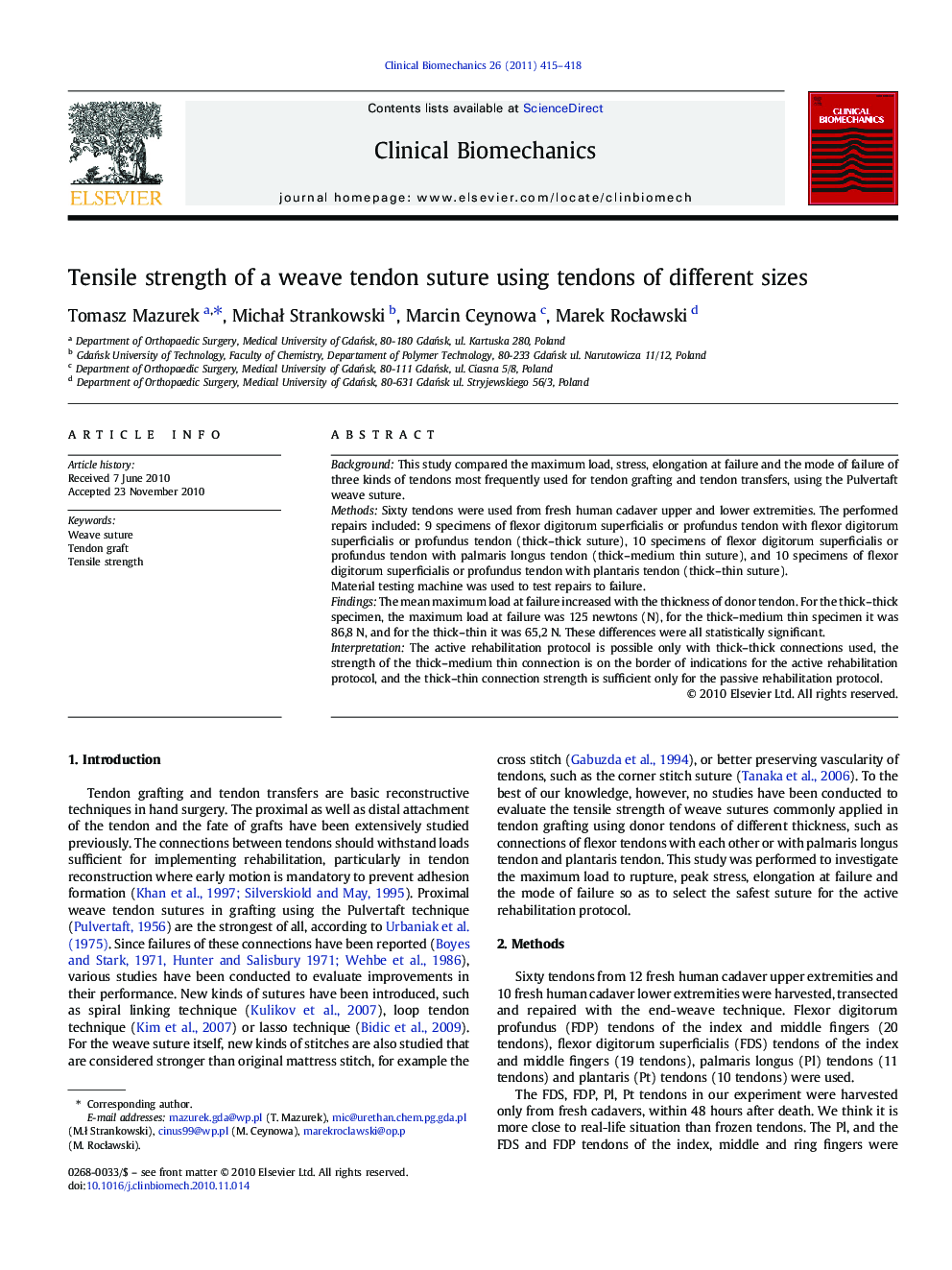| Article ID | Journal | Published Year | Pages | File Type |
|---|---|---|---|---|
| 4050830 | Clinical Biomechanics | 2011 | 4 Pages |
BackgroundThis study compared the maximum load, stress, elongation at failure and the mode of failure of three kinds of tendons most frequently used for tendon grafting and tendon transfers, using the Pulvertaft weave suture.MethodsSixty tendons were used from fresh human cadaver upper and lower extremities. The performed repairs included: 9 specimens of flexor digitorum superficialis or profundus tendon with flexor digitorum superficialis or profundus tendon (thick–thick suture), 10 specimens of flexor digitorum superficialis or profundus tendon with palmaris longus tendon (thick–medium thin suture), and 10 specimens of flexor digitorum superficialis or profundus tendon with plantaris tendon (thick–thin suture).Material testing machine was used to test repairs to failure.FindingsThe mean maximum load at failure increased with the thickness of donor tendon. For the thick–thick specimen, the maximum load at failure was 125 newtons (N), for the thick–medium thin specimen it was 86,8 N, and for the thick–thin it was 65,2 N. These differences were all statistically significant.InterpretationThe active rehabilitation protocol is possible only with thick–thick connections used, the strength of the thick–medium thin connection is on the border of indications for the active rehabilitation protocol, and the thick–thin connection strength is sufficient only for the passive rehabilitation protocol.
